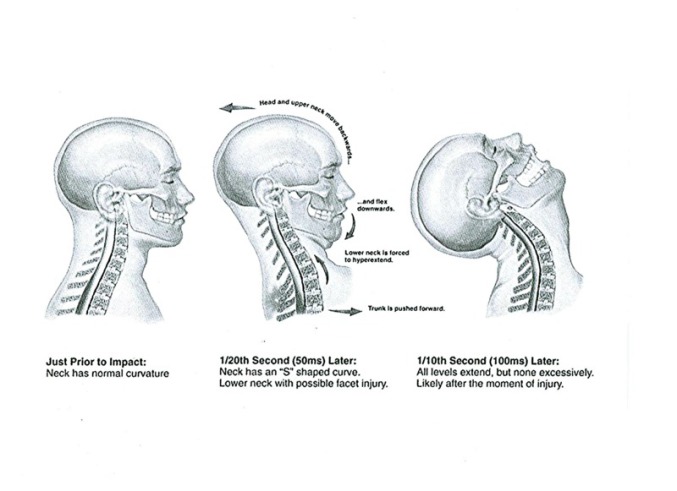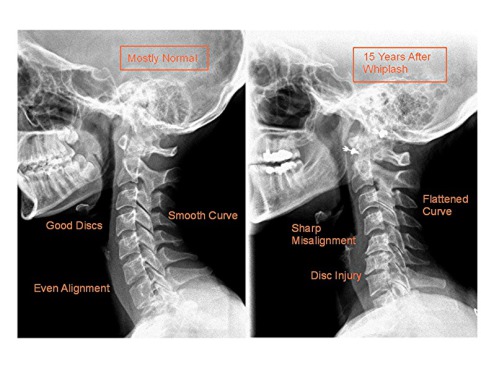Whiplash Injury and Cervical Spine Sprain/Strains caused by Auto Accidents
Whiplash can be extremely traumatic to the neck and cervical region of the spine. Car wrecks such as rear end accidents are a common reason injuries occur. Velocity forces that range from a 5 miles per hour to 70 miles per hour accidents have shown to have the same effect to the spine. Symptoms of whiplash include neck pain to radiating arm numbness and tingling. These common symptoms can be related to a herniated disc, cervical vertebrae misalignments, and over stretched neck muscles and tendons.
Auto Accidents can be severe enough to cause damage to critical supporting structures such as a disc. Common symptoms can include mild headaches to even migraine like symptoms such as dizziness, nausea, and light sensitivity. An MRI or magnetic resonance imaging is a great visual tool to distinguish which levels have been damaged and are often used post accident to determine if other procedures may be necessary to properly treat your condition.
Long-term complications from whiplash injuries after an auto accident can be considerable. Chronic neck pain and chronic symptoms can be a consequence, however there are ways to address this condition successfully. One important factor is addressing the structural integrity of the spine specifically with chiropractic care and then progressing to strengthen weakened ligaments and muscles with active therapy. These critical stages of care focuses on properly aligning the spine as healing occurs. The natural healing process will happen without proper treatment, nevertheless improper healing can be a consequence creating a multitude of chronic conditions years later. This is why it is imperiative care begin immediately after an auto accident because the stages of healing are already in process.
Whiplash is often treated with a cervical collar or a neck brace, which in many instances can make your condition worse. This is due to the lack of motion needed to make sure segments of your spine are healing separately and not together. However, cervical collars do have there benefits in the beginning phases of care but it is not recommended over a duration of more than 1-2 weeks. Treatment of whiplash with immobilization techniques are necessary to realign segments that may have shifted after the severe hyperextension and flexion motion. Normal range of motion of the cervical region must be restored to avoid long term effects such as arthritis or cervical spondylosis.
A motor vehicle accident can have a multitude of chronic effects, however whiplash syndrome is the most common. Other chronic effects include facet joint arthritis, pins and needles sensation, and degenerative joint disease. These conditions are often addressed with painkillers such as ibuprofen, Nsaids, and even evasive procedures such as surgery. After a car accident it is important to first seek care conservatively. Conservative spinal manipulation is a proven way to avoid the common pitfalls of addictive medications and the failures of surgery.
Whiplash injury symptoms can last 2 weeks to as much as 3 months acutely. However, chronically it can last a lifetime. It is important to understand the underlining issue with a trauma which can be assumed as small. Structural changes in the spine are beyond the most important factors in healing correctly post auto accident and it should be of your upmost concern beyond just pain. Pain usually subsides on its own with or without any treatment at all, however a year or two later can wreck havoc on your health without any auto insurance to turn to. Always seek medical attention immediately to avoid the common pitfalls of auto accidents.


